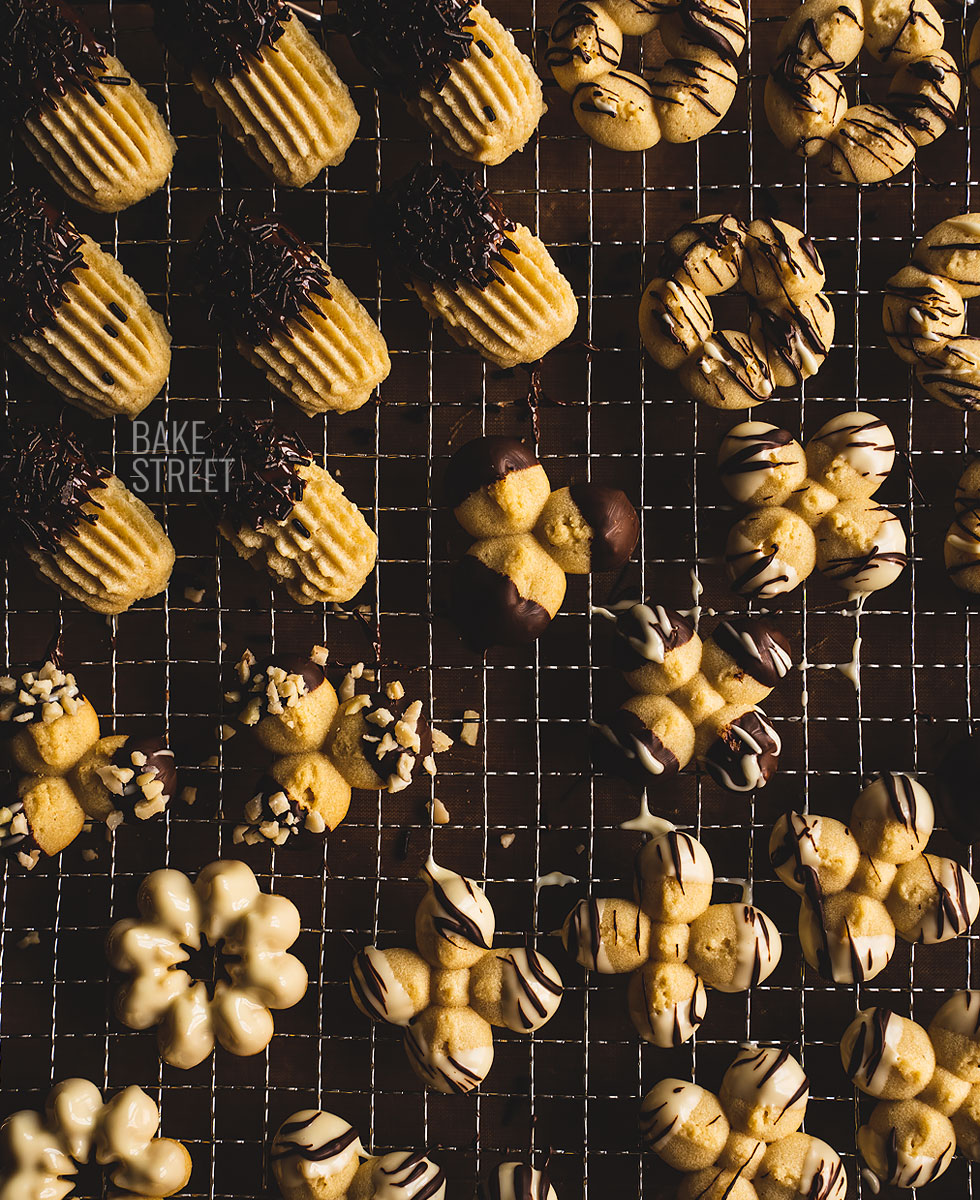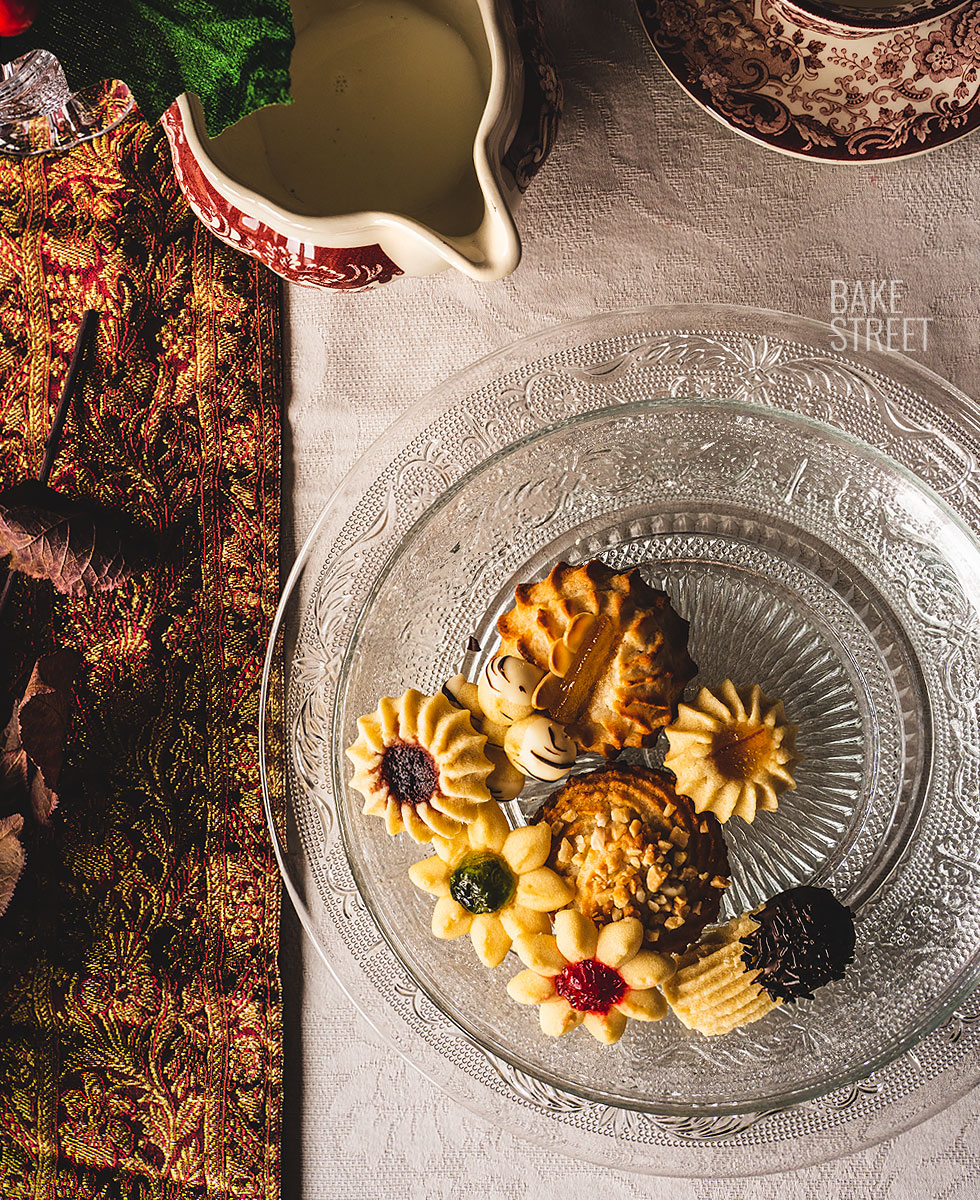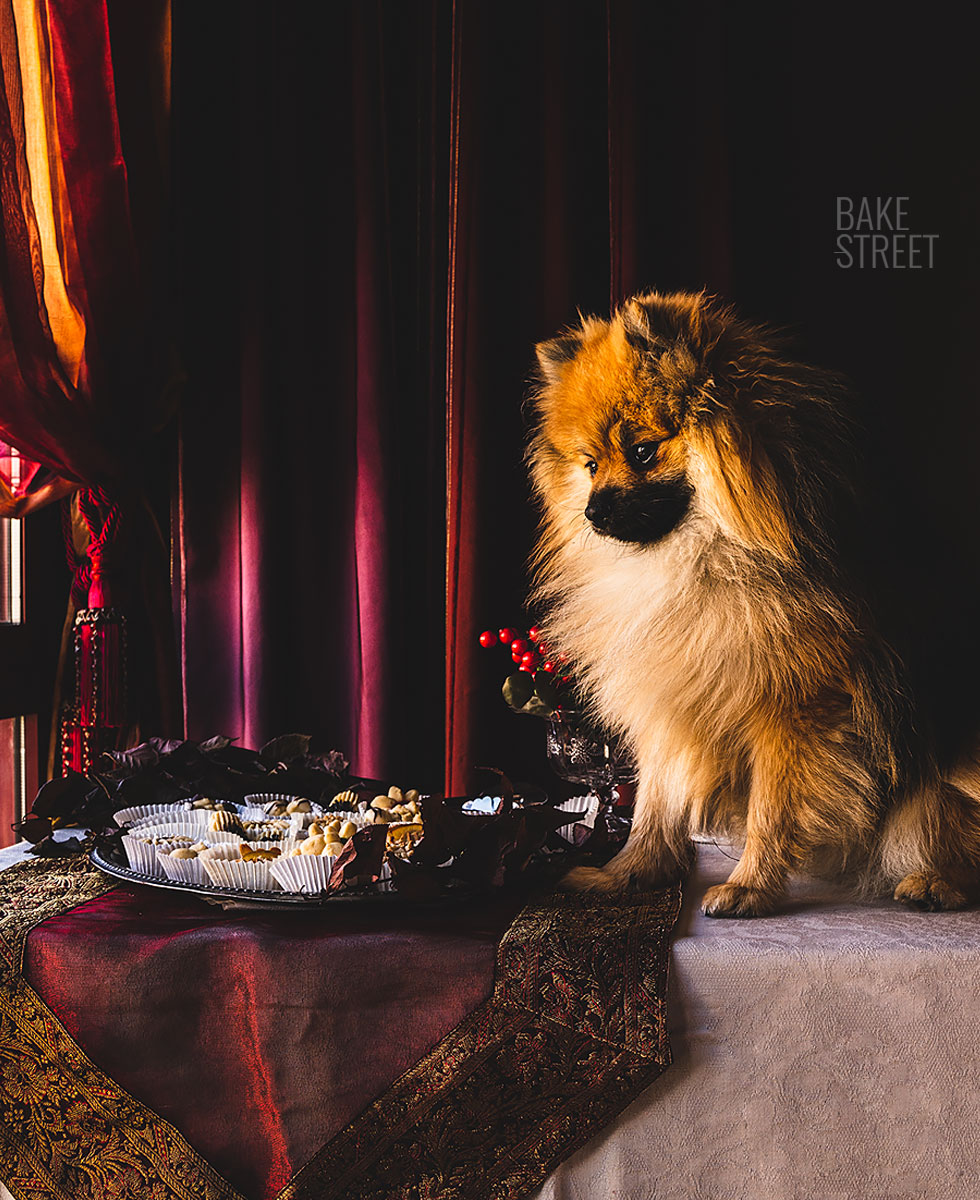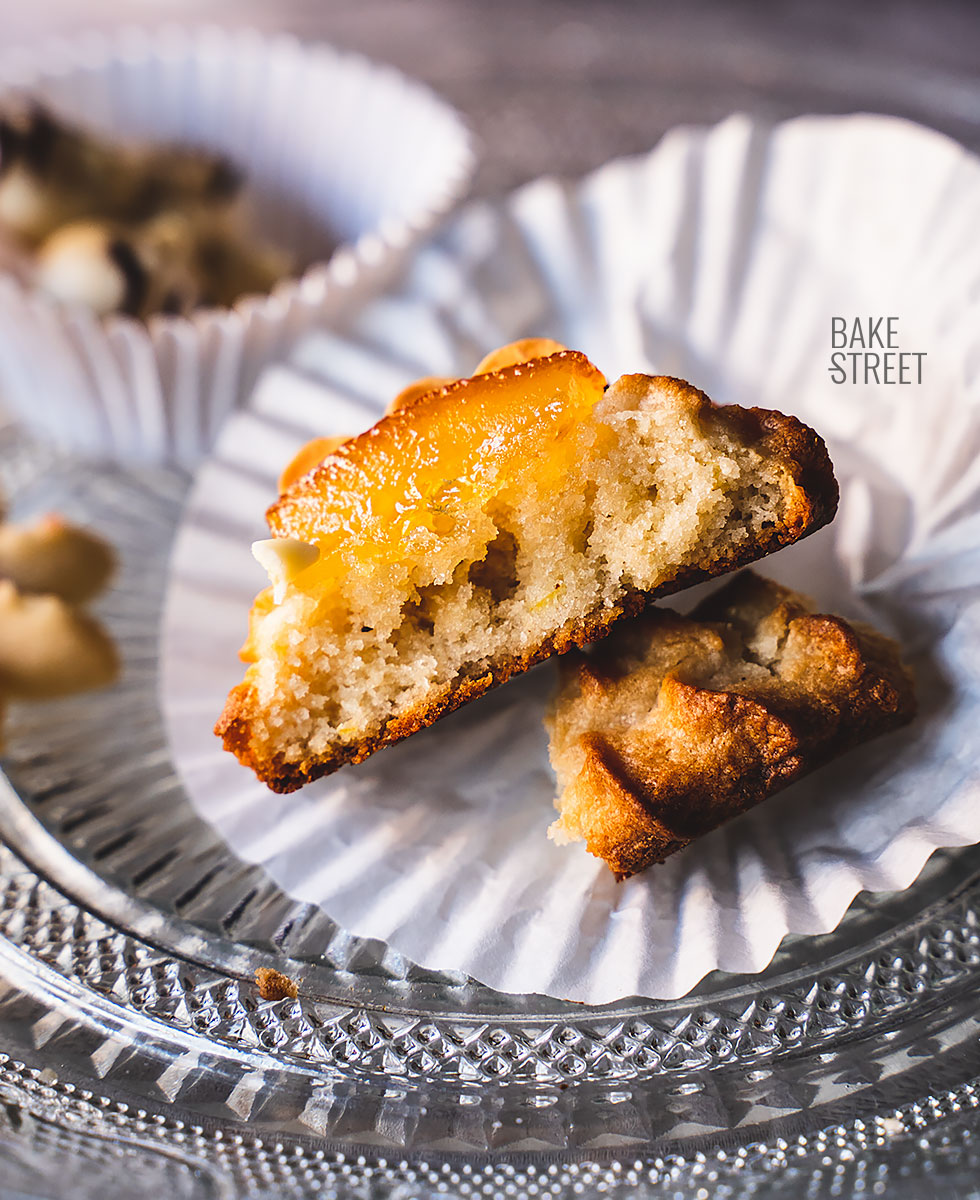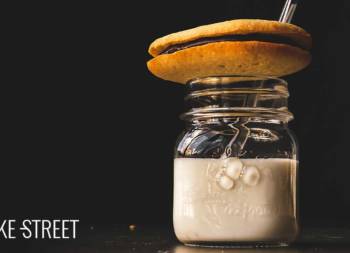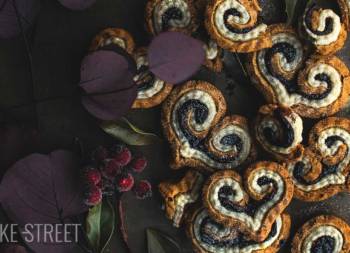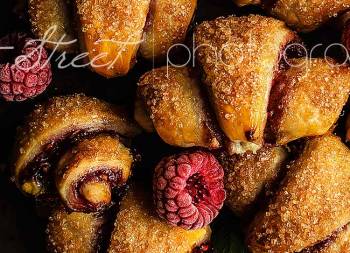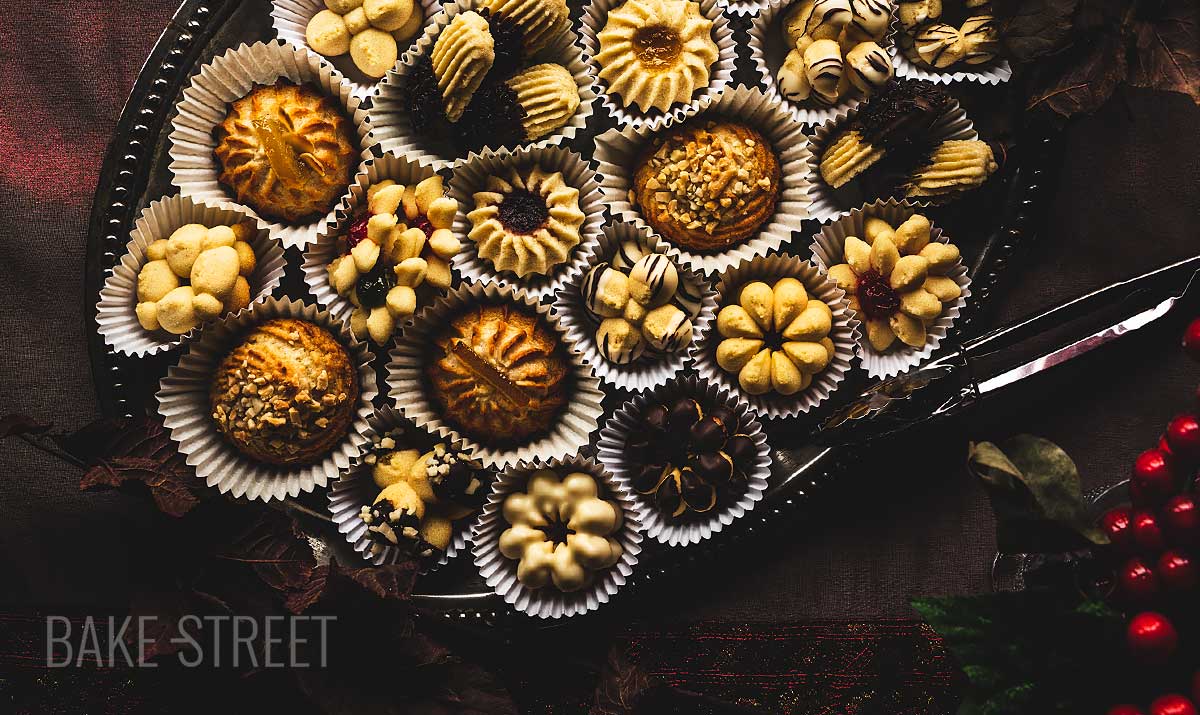
How to make an assorted tea pastes
I had been thinking for a long time about sharing with you How to make an assorted tea pastes. You know how everything vintage, old-fashioned and Victorian makes me crazy. What’s more, all the series and films that are period, directly earn points with me just because of their theme. I am a hopeless romantic…
I decided to wait for this time of year to share the post for several reasons; with the arrival of the cold weather I always feel like baking more, these things are to enjoy with a blanket and a good tea/coffee/hot chocolate, we have Christmas just around the corner and we can always make gifts or have nice details with friends and family. I promise you that a well presented box with these pastries will look beautiful. Nothing better to show your love than something made with your own hands.
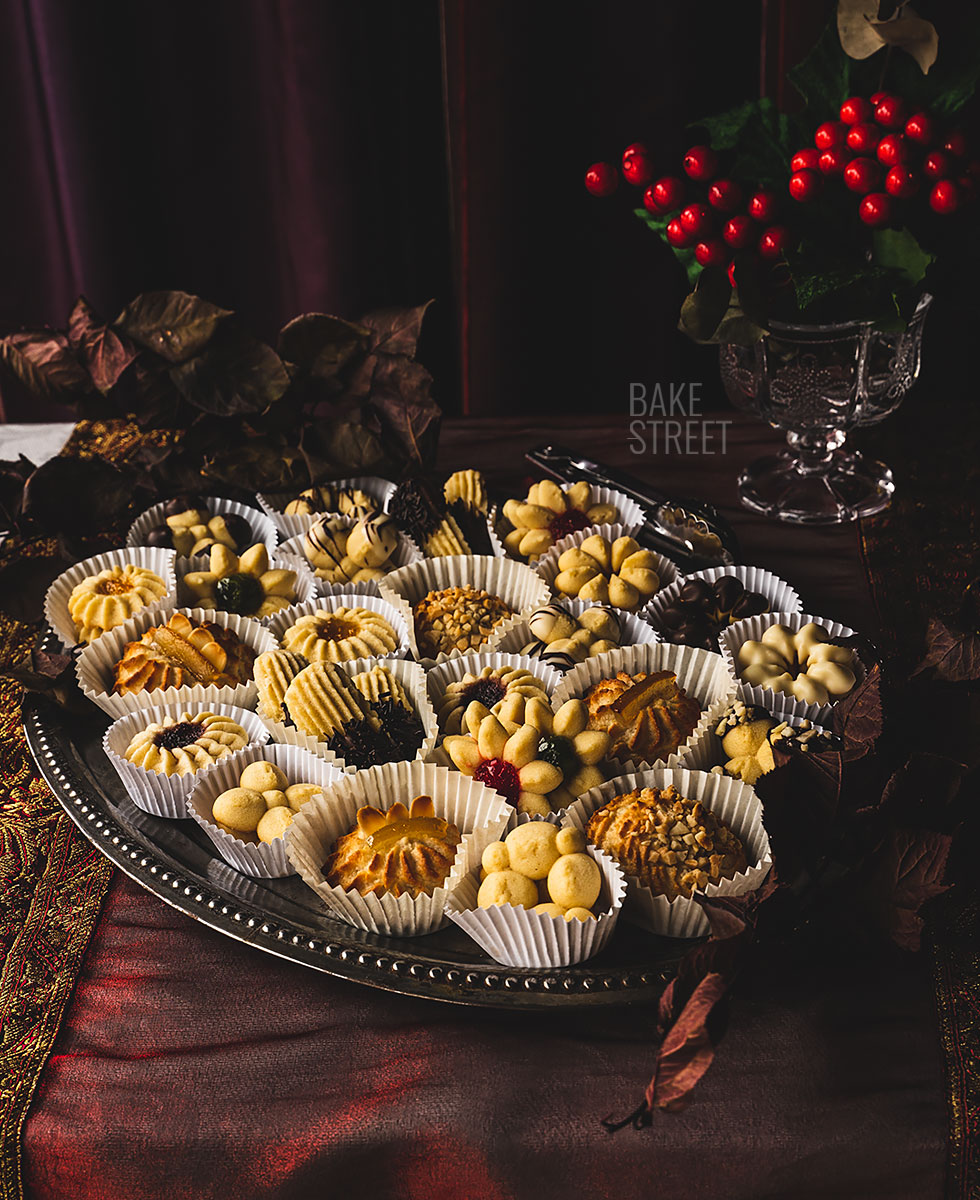
The tea history.
Before I tell you the origin of the tea pastes and their consumption habits, I would like to tell you the origins of tea history. Since, in essence, it is the drink with which these pastes are usually or used to be accompanied. Although in Spain tea consumption is not very common and coffee or hot chocolate is more widespread.
Tea consumption is an ancestral tradition in China, becoming the traditional drink in the Far East. Despite not reaching great popularity in other countries, Europe showed great enthusiasm for tea, something that even led them to the creation of luxury accessories and even the opening of tea salons.
Tradition with heritage.
There are Chinese writings that date back several centuries before the Common Era where they mention a drink made from bitter plants, presumably tea, which was reserved exclusively for the Imperial Court. In the second century of the Common Era, Buddhist monks discovered the stimulating properties of tea and contributed to its cultivation and development.
Centuries later, tea became a popular drink and became available to everyone.
The art of preparing and drinking tea evolved into a true ritual and even tea houses were created. They played a key social role. The reputation of this prestigious drink gradually spread beyond the borders of China.
Tea was already being exported to Tibet in the 7th century and then to Korea. At this time, Japan also discovered it, but it was not until the 12th century that the custom of drinking tea became widespread and normalized, achieving great acceptance. Europeans had already heard of tea through missionaries returning from the Far East. However, it was the Dutch who first brought it back in the early 17th century. Decades later, it spread to the rest of Europe.
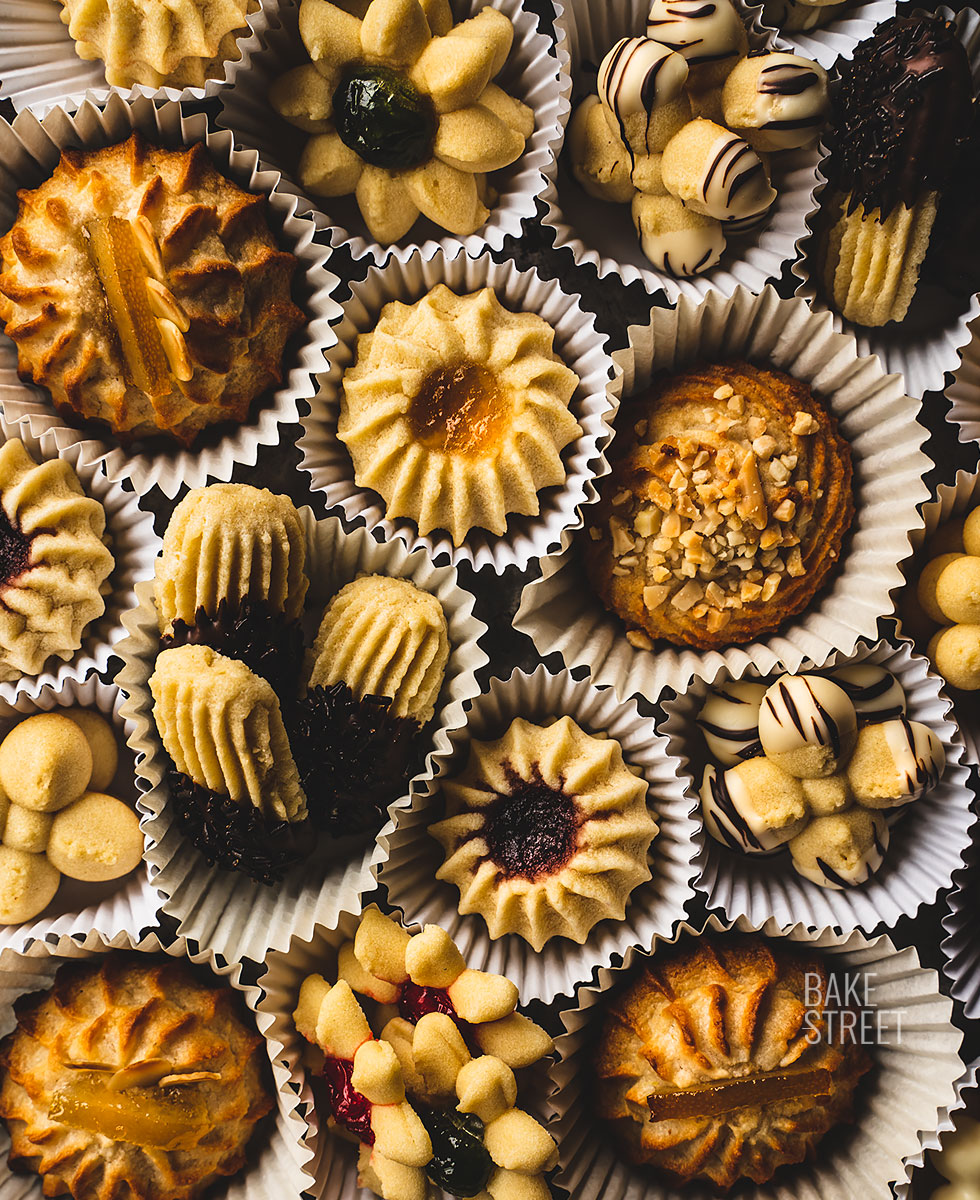
Tea acceptance in Europe.
The tea possessed a unique and exotic charm, in addition to attributing to it medicinal properties. However, its approval varied from country to country. In Latin countries, for example, its reception was not very popular.
This drink that came from the Far East, complemented the ornamental objects of Chinese origin or inspiration that were very fashionable in the eighteenth century. It was especially linked to the aristocracy and the privileged classes, becoming a society’s lifestyle. With time, it became a distinguished and refined drink for the ladies of the upper middle class. The rest of the population considered tea as an “elegant” product or for medicinal purposes, so it was not very common to consume it.
On the contrary, the Dutch and the Germans adopted it immediately. The British developed a passion for tea and soon became a tea-drinking nation. Russia also succumbed to their charms, created the samovar (metal container in the form of a tall coffee pot with an inner fireplace with a stove, used to make tea) becoming the center of Russian homes.
The art of serving and drinking tea gradually evolved throughout Europe. At first it was considered particularly exotic to drink it in Chinese porcelain cups that were brought in the same boats as the tea. Over time, as tea consumption in Europe normalized, increasingly luxurious accessories began to be created. It is said that Louis XIV had his tea prepared in a golden teapot.
In the second half of the 19th century a new custom emerged. The tradition of afternoon tea, which originated in Great Britain, spread throughout Europe and tea rooms began to open in all major cities. These were places that women could frequent freely, unlike cafés, which were considered unsuitable for them.
Black Tea.
For a long time, Europeans only consumed black tea. Initially imported from China, then from India and Ceylon. Also perfumed and flavored teas were consumed, the most popular being Earl Grey flavored with bergamot and jasmine. Against the oriental tradition, and at the risk of altering the subtle flavors of this plant, sugar and a dash of milk were added.
Tea legend…
It is said that tea was discovered in China in 2373 B.C. by the Emperor Shennong, father of agriculture and medicine, its name meaning The Divine Farmer. He traveled around the country looking for new medicinal plants, testing them on himself, even if some of them were poisonous, something that was crucial for the development of Chinese medicine and agriculture.
One day, he felt sick and decided to rest under a tree. He decided to boil some water to be able to consume it, as he was used to do. Some leaves fell from the tree under which he was resting inside his glass, he decided to drink that water anyway. He discovered that this plant provided a slightly bitter taste, but very rich in flavor.
This drink made him feel good and, from there, tea was born as a drink with healing properties. The tea plant can be used as an antidote against the poisoning of about seventy different species of plants.
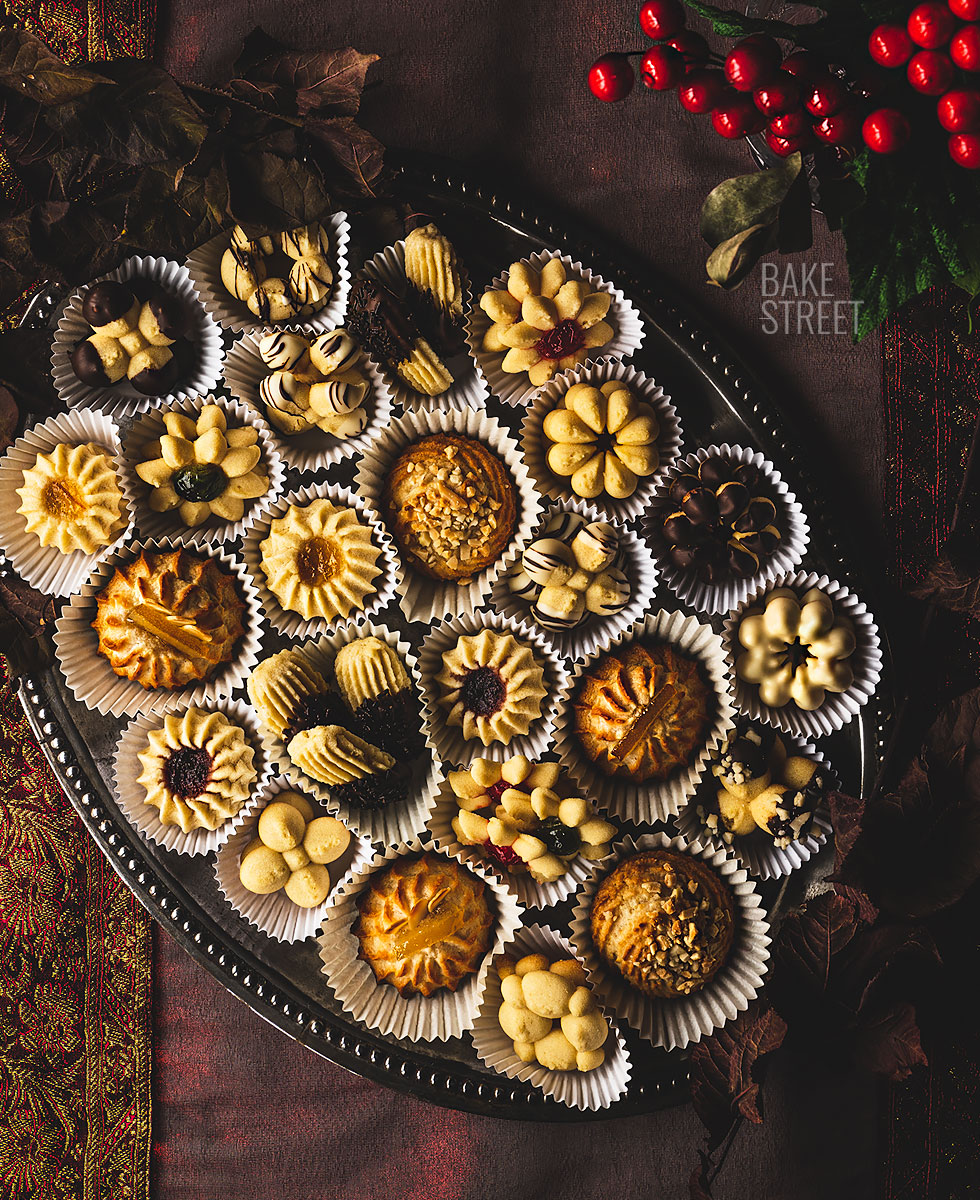
Origin of the tea time and the assortment that accompanies it, such as the tea pastes.
“There are few hours in life more enjoyable than the hour devoted to the ceremony known as afternoon tea.”
Henry James
Afternoon tea, the quintessential English custom, is surprisingly a relatively new tradition. As I mentioned above, the custom of drinking tea dates back to the third millennium B.C. in China and was popularized in England during the 1660s by King Charles II and his wife, the Portuguese Infanta Catherine de Braganza. But it was not until the middle of the 19th century that the concept of “Afternoon Tea” appeared.
It was introduced in England by Anna, the seventh Duchess of Bedford, in 1840. The duchess used to be hungry around four o’clock in the afternoon. Since dinner at her house was served at eight o’clock. After a long period of time between lunch and dinner, the duchess asked for a tray of tea with bread and butter, as well as cake, to be served in the afternoon (some years ago, the Earl of Sandwich already had the idea of arranging a filling between two slices of bread).
This habit, became a habit and she began to invite her friends to join her in sharing it.
This tea break became a fashionable social event. During the 1880s, women of the upper class and society wore long dresses, gloves and hats for afternoon tea, which was usually served in the hall between four and five o’clock.
What is the famous afternoon tea?
This special, romantic and relaxed moment cannot be made up of simple, soulless elements. It is a magical time, a break in the middle of the afternoon to enjoy, breathe and disconnect while waiting for the night to come. It is customary to serve a selection of delicate sandwiches (including, among them, the famous cucumber sandwiches), scones with clotted cream and jam. Although cakes and pastries are also usually served.
This captivating moment, sheathed in majesty and with exalted elegance, reached its maximum splendor when freshly made tea was poured over delicate porcelain cups using silver teapots. That moment.
Today, that magic, that peace and interest in enjoying the little things, has been lost. It is true that the tradition is still alive, but lacking in emotion. In the best cases, the tea that is not from a bag, can be accompanied by some butter cookies or a piece of cake.
We live too fast, something that does not allow us to enjoy the trip. It is good to stop once in a while to look around and enjoy the view. They will never be the same.
Recipe assorted tea pastes
FOR BUTTER COOKIES (100 pieces):
- 370 g pastry/cake flour
- 50 g cornstarch
- 250 g unsalted butter at room temperature
- 150 g icing sugar
- 2 eggs (100 g) + 1 egg yolk
- 1 tsp vanilla extract
- pinch of salt
FOR ALMOND PASTES (14 pieces):
- 180 g ground almond
- 130 g icing sugar
- 15 g honey
- 68 g egg whites
FOR DECORATING:
- candied cherries (red and green)
- black chocolate (70 g) and white chocolate (40 g)
- chocolate sprinkles
- jam, I have used bitter orange and cherry
- candied lemon (recipe in this link)
- almonds, sliced and chopped
Instructions
Make butter cookies.
- In the KitchenAid bowl add the butter along with the icing sugar. Beat with the whisk, starting at low speed and gradually increasing until reaching medium speed. Beat until you get a whitish and aerated mixture.
- Add the eggs together with the yolk and the vanilla extract, mix until amalgamated. Incorporate the salt.
- Start to add the flour and the cornstarch. We will do it adding small batches and alternating them. Remember not to over mix, we will mix only until both ingredients have been integrated into the batter.
Prepara cookie press and a piping bag.
- Place the cookie batter inside the press, choose the disc with which we want to create the cookies and close it.
- Pipe the cookies on a perforated tray with silpat or directly on a tray. We should not make them on parchment paper, it will be a complicated, if not impossible, job.
- As we pipe the cookies, we will change the disc to create a wide assortment of cookies.
- I reserved a part of the batter to put it in a piping bag with a curly tip. That way I created the curly long cookies, which I later bathe with chocolate and sprinkle with chocolate sprinkles, and the round ones that I decorate in the central part with jam (once the round cookie is piped, we gently press it in the center with the fingertip slightly moistened in water and fill with jam as we like).
- The cookies that have the shape of a flower, can be decorated with half candied cherry. In my case I used green and red.
- Refrigerate for 20 minutes. We may not be able to refrigerate all the trays, but as we bake, we can keep the new ones so that they will have a cold rest time.
Bake.
- Preheat oven to 335ºF/170ºC.
- Place the tray at medium height and bake for 10 minutes.
- Remove from the oven, let them rest for a couple of minutes on the tray and move it to a rack.
- Let them cool down completely.
- Repeat the same process with the rest of the cookies.
Decorate with chocolate.
- Melt the chocolate in a bain-marie.
- Decorate the cookies to our taste. We can even alternate both types of chocolate to decorate them.
- Let the chocolate harden completely.

Make almond pastes.
- In a bowl mix the ground almond with the icing sugar.
- Add the almond extract together with the honey and the egg whites. Mix lightly with the help of a spatula.
- Add the lemon zest and mix again until a homogeneous mixture is obtained.
- Place in a piping bag with a curly tip.
Pipe almond pastes.
- Pipe almond pastes on a perforated tray with a silpat. Ideally, the pastes should have two turns of piping, thus ensuring that it is crunchy on the outside and tender and moist on the inside.
- We can create different shapes to decorate them with different ingredients. In my case, some with candied lemon and sliced almonds and others with chopped almonds.
- Refrigerate for 1-2 hours (better 2 if possible), this way we favour them to keep their shape after baking.
Bake.
- Preheat oven to 390ºF/200ºC.
- Place at medium height and bake for 10-12 minutes.
- Remove from the oven and let cool completely on a rack.
Serve tea pastes.
- We can serve them the way we like and adjust them to what we have available at home.
- A good option is to use cupcake/muffin cups paper. That way we can present them in a simple, clean and elegant way. In addition to being able to store them without damaging them inside a tin box or even serve them on a tray.

Notes
- Don't be impressed when you see 100 pieces of pastes. The size, in many cases, is one bite. In the video, the image you see two racks with cookies, there are just over 80 units and they look less. They will last less than you think and, if they do, they will stay in perfect condition for a long time.
- It is important to use a good quality butter to achieve a good flavor in the cookies.
- The amount of egg whites to add to the almond pastes will depend on the quality of the ground almonds. The drier they are, the more egg whites they will need.
- It is important to respect the cold resting time in both cases, thus ensuring that the pastes maintains their shape after baking. Especially in the case of almond pastes.
- The cookies made with press, must be made on silpat or a tray. Otherwise it will not adhere to the surface on which we are going to bake it.

- If you do not have a cookie press, you can make them with a piping bag and tip.
- We must not exceed the baking time, otherwise we will get some dry pastes. Not very pleasant to the palate.
- The almond pastes must have two turns of piping in height to favor their juiciness inside. If you do not want to make them this way, you should reduce the final baking time a little to avoid them drying out.
- If you don't like the lemon, you can use orange or tangerine zest instead.
- The decorations are totally optional; chocolate, nuts, candied fruits... To your taste and choice.
- We can keep them inside a tin box or airtight container for several weeks.

We are at a point in our lives where we must learn to enjoy every moment, whatever the reason or motive that makes us happy. For my part, I can tell you that this happiness comes to me through cooking and baking, through writing and photography. To create would be the right word. Don't stop creating situations, moments, experiences, but the most important thing is not to forget to live and feel them.
Neither is it necessary to elaborate very complex things to live those moments. A simple assorted tea pastes is an example of how something so simple can make us enjoy so much. From the moment we start making them, to the moment we sit down to taste them.
I wish you a wonderful weekend!
Big hugs,
Eva
Sources:Alimentarium, Historic-UK
